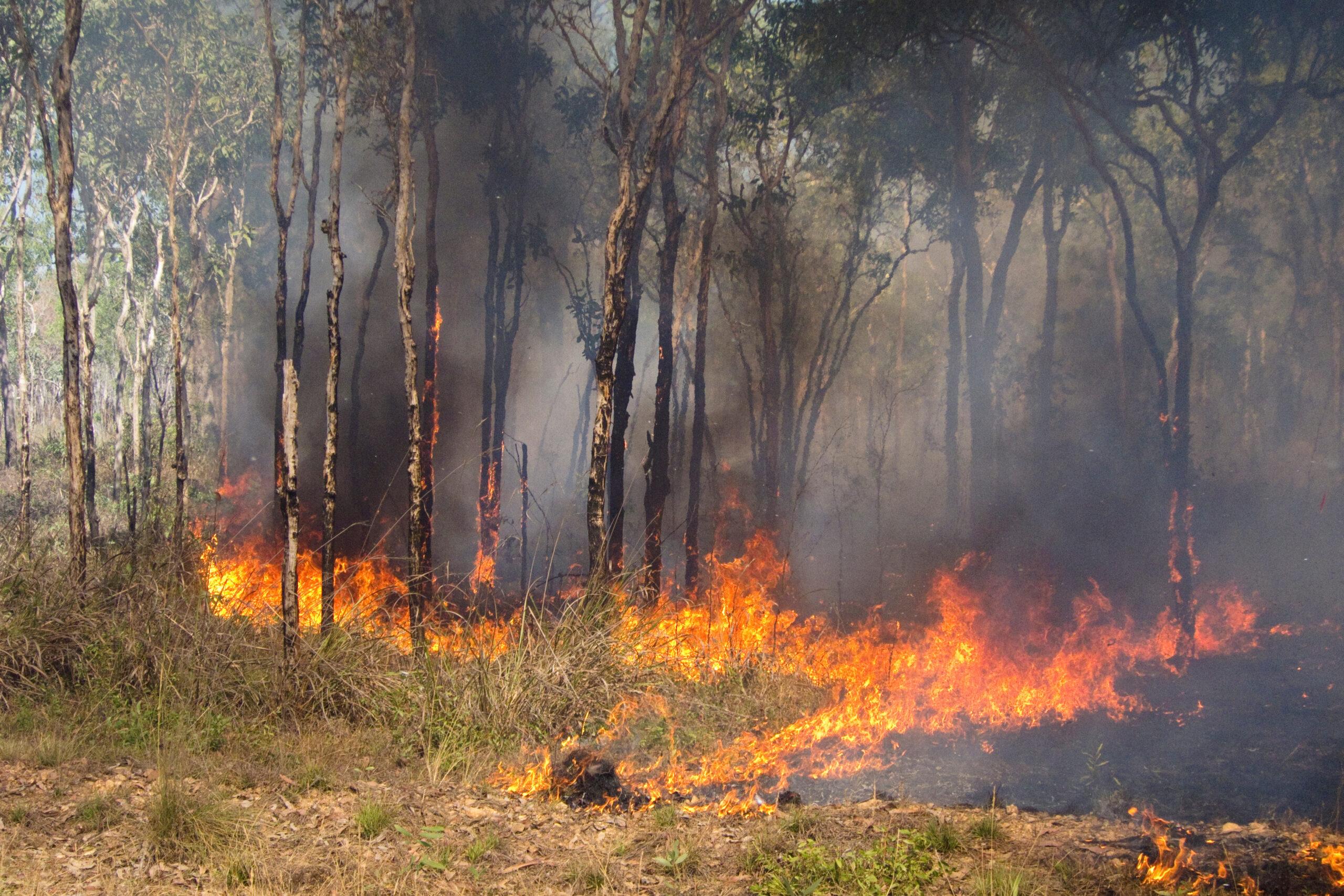Project start date: 01/04/2024
Project end date: 01/06/2027
NESP funding: $755,483 (GST-exclusive)
Tropical savannas are the dominant ecosystem across the northern quarter of Australia and have vast expanses of grassy understories. These ecosystems are important for biodiversity conservation, as Savanna woodlands make up nearly 80 per cent of Kakadu National Park.
Fire is frequent in the savannas of Kakadu, with native grasses providing the fuel load for regular dry season fires. However, if the fires are too hot, like those in the late dry season, they can be damaging to biodiversity and the persistence of bush tucker.
Spear grass (Sarga intrans) – previously Sorghum intrans – is a common native annual grass species across northern Australia. Spear grass abundance is encouraged by regular fire and there have been reports of increasing distribution of Spear grass in Kakadu due to changes in fire management
Late dry season fires increase the abundance of Sarga by clearing competing species and providing space for Sarga seedlings to germinate. This, in turn, fuels further late dry season fire, and the spear grass can become very dominant in the understory and can lead to intense damaging fires if burnt late in the dry season.

Bushfire in the outback of Kakadu National Park, Northern Territory, Australia. Photo Uwe/AdobeStock.
Historically, low-intensity controlled burns in the early dry season have been used to reduce Sarga abundance. But due to climate change, early dry season burns have become hotter and more intense, making them a less viable option for grassy weed management.
We’re investigating wet season burning as an alternative way to disrupt the Sarga reproduction cycle. Wet season burning aims to kill new Sarga seedlings before they’ve had a chance to produce new seed themselves, while also reducing the overall grassy fuel load.
Wet season burning provides a promising option for conserving biodiversity and bush tucker in Kakadu National Park, but a better understanding is needed before it can be widely implemented. Historical data and Indigenous Knowledge of wet season burns will help us determine how effective they are as a fire management strategy.
The information we gather will inform how fire and biodiversity management is conducted within Kakadu National Park and may be useful for the management of other tropical savanna ecosystems.
This project is informed by a previous Resilient Landscapes Hub’s project addressing Indigenous research priorities for Kakadu.
Key research areas
To fill key knowledge gaps about using wet season burning as a management tool for tropical savanna, this project is:
No resources found.
Project leader
The project is being led by Professor Samantha Setterfield from the University of Western Australia, Victor Cooper and Margaret Rawlinson from the Bininj Mungguy Research Committee, and Professor Natalie Rossiter-Rachor from Charles Darwin University.
Contact
For further information, contact samantha.setterfield@uwa.edu.au, natalie.rossiter@cdu.edu.au or nesplandscapes@uwa.edu.au.
Research users
People